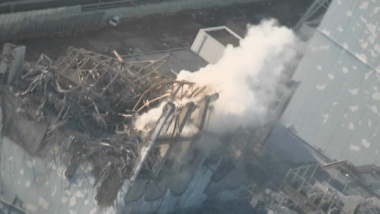 Kyodo More signs of serious radiation contamination in and near the Fukushima Daiichi nuclear power plant were detected Thursday, with the latest data finding groundwater containing radioactive iodine 10,000 times the legal threshold and the concentration of radioactive iodine-131 in nearby seawater rising to the highest level yet.
Kyodo More signs of serious radiation contamination in and near the Fukushima Daiichi nuclear power plant were detected Thursday, with the latest data finding groundwater containing radioactive iodine 10,000 times the legal threshold and the concentration of radioactive iodine-131 in nearby seawater rising to the highest level yet.Radioactive material was confirmed from groundwater for the first time since the March 11 quake and tsunami hit the nuclear power plant on the Pacific coast, knocking out the reactors' key cooling functions. An official of the plant operator Tokyo Electric Power Co. said, "We're aware this is an extremely high figure."
The contaminated groundwater was found from around the No. 1 reactor's turbine building, although the radiation level of groundwater is usually so low that it cannot be measured.
 Japanese authorities were also urged to consider taking action over radioactive contamination outside the 20-kilometer evacuation zone around the plant, as the International Atomic Energy Agency said readings from soil samples collected in the village of Iitate, about 40 km from the plant, exceeded its criteria for evacuation.
Japanese authorities were also urged to consider taking action over radioactive contamination outside the 20-kilometer evacuation zone around the plant, as the International Atomic Energy Agency said readings from soil samples collected in the village of Iitate, about 40 km from the plant, exceeded its criteria for evacuation.The authorities denied that the seawater and soil contamination posed an immediate threat to human health, but the government said it plans to enhance radiation data monitoring around the plant on the Pacific coast, about 220 km northeast of Tokyo.
According to the government's nuclear safety agency, the radioactive iodine-131 at a concentration of 4,385 times the maximum level permitted under law has been detected in a seawater sample collected Wednesday afternoon near the plant, exceeding the previous high recorded the day before.
In Tuesday's sample, the concentration level was 3,355 times the maximum legal limit.